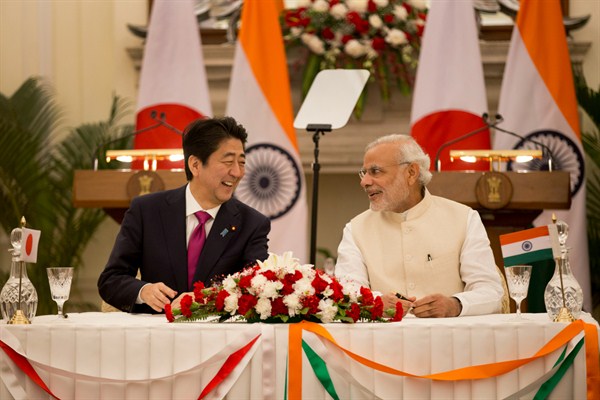During his visit to New Delhi last December, Japanese Prime Minister Shinzo Abe and his Indian counterpart, Narendra Modi, pledged to transform India and Japan’s partnership into a “deep, broad-based and action-oriented relationship.” Behind the lofty rhetoric were several major developments, most of all finally reaching a consensus on the text of a bilateral civil nuclear agreement, long in the works, that would allow Japan to directly export nuclear plants to India. It would be signed, Abe and Modi said, once “technical details” were sorted out.
In addition to the nuclear deal, they announced that Japan would provide $12 billion in soft loans to finance India’s first high-speed rail system. They also reached several defense agreements, including on India’s purchase and domestic manufacture of a Japanese military seaplane. The contracts are flagship projects for India and Japan’s infrastructure and defense cooperation and are intended to dovetail with Modi’s “Make in India” manufacturing program.
Going forward, the deals are intended to provide India-Japan ties with a sustainable logic of their own and reinforce mutual confidence in New Delhi and Tokyo over their ability to balance China in the Asia-Pacific. That confidence is also manifesting itself in closer military-intelligence cooperation and a willingness to support freedom of navigation in the South China Sea, as part of an unstated coalition with the United States against China’s assertive moves.

